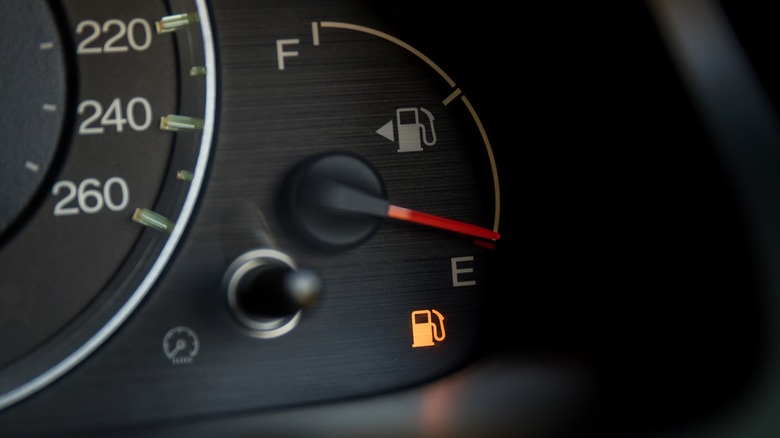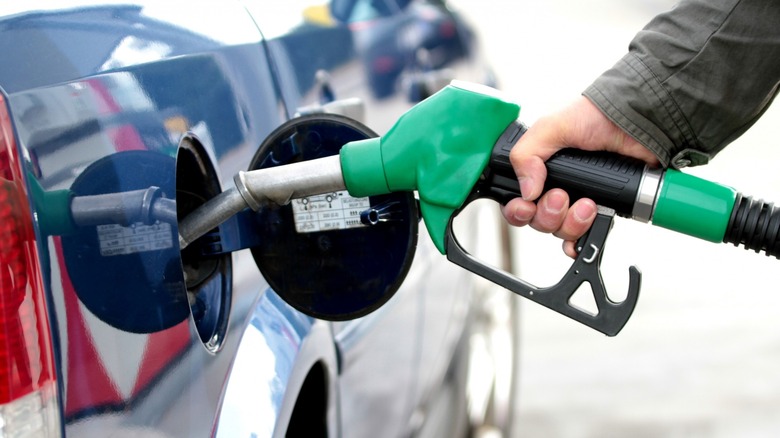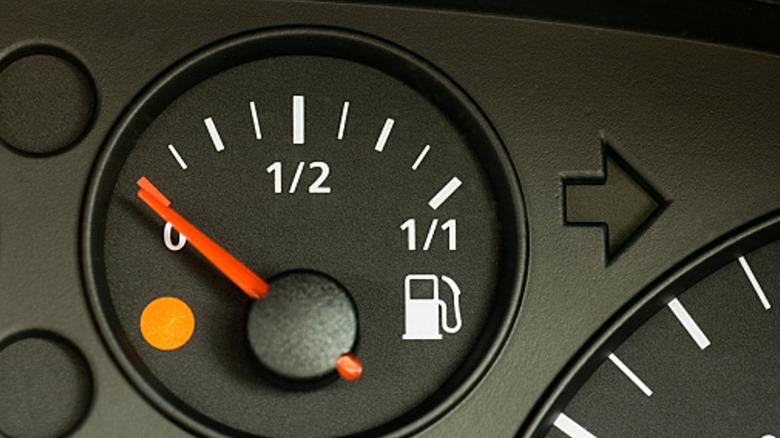Is It Safe To Drive Your Car With The Gas Light On?
With gas prices following a rising trend, it's no surprise that car manufacturers are moving away from gas-guzzling V8 engines with large displacement volumes. Instead, automotive companies are fiercely focused on using the latest fuel-efficient technologies to appeal to a larger crowd and meet the latest emission regulations.
Despite that, one recurring scenario that haunts drivers is getting in the car and having the gas light flickering on the dashboard, indicating the vehicle is almost out of gas. That's where they face a dilemma: Is it safe to continue driving to your destination, or should you stop by a gas station immediately?
Besides the risk of getting stranded in the middle of the road, there are no immediate hazards to driving with the gas light on. So, you can get away with it once or twice if you can't afford to extend your route and visit the gas station. However, the story can be different if your car runs on fumes too often.
What are the consequences of consistently driving with low gas levels?
Leaving the fuel tank near empty is one of the most common driving habits that can cause damage to the engine and other compartments. One of the primary long-term consequences of driving low on gas is damage to the car's fuel pump. The gas inside your tank keeps the fuel pump cool and lubricated. When your vehicle's tank is almost empty, the fuel pump is no longer submerged in gas, increasing the chance of overheating. To keep the fuel pump fully submerged, it's best to keep your tank at least 1/4 full.
Moreover, low fuel can result in engine cylinders to misfire. As you travel at higher RPMs, the car wants to suck more air and fuel inside the cylinders to increase speed and torque. If the car can't pump enough fuel, it can cause knocking sounds inside the engine and result in long-term damage. The engine knocking is the same problem that occurs for many turbocharged vehicles if you use regular gas instead of premium.
How far can you drive with the fuel light on?
While it vastly differs from one vehicle to another, you can expect anything from 30 to 50 miles of range with the fuel light turned on. Some of the most fuel-efficient cars and pickup trucks with larger fuel tanks can exceed 50 miles considerably. For instance, the Nissan Altima can go well over 80 miles with the fuel light on, according to a survey of qualified mechanics conducted by roadside assistance company GetResqued.
Typically, most automakers set the light to turn on once the gas levels reach 1/16th of the fuel tank's full capacity. For a Toyota Prius, that means when you reach the 1.6-gallon mark, whereas a Jeep Grand Cherokee can have as much as 3 gallons before the driver gets alerted to running low on gas.
Regardless of how many gallons you have left inside your tank, you can utilize different methods to use less gas and increase mileage. Going easy on the throttle, avoiding long idles, and eliminating drag can increase your chances of making it to the gas station hassle-free.


